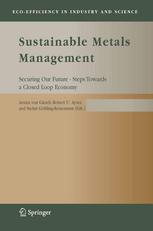

Most ebook files are in PDF format, so you can easily read them using various software such as Foxit Reader or directly on the Google Chrome browser.
Some ebook files are released by publishers in other formats such as .awz, .mobi, .epub, .fb2, etc. You may need to install specific software to read these formats on mobile/PC, such as Calibre.
Please read the tutorial at this link: https://ebookbell.com/faq
We offer FREE conversion to the popular formats you request; however, this may take some time. Therefore, right after payment, please email us, and we will try to provide the service as quickly as possible.
For some exceptional file formats or broken links (if any), please refrain from opening any disputes. Instead, email us first, and we will try to assist within a maximum of 6 hours.
EbookBell Team

4.1
100 reviewsMetals have been essential to human civilisation for many thousands of years. With a broad range of applications they have found their way into virtually every aspect of our daily lives. Their durable and recyclable properties should make them ideal materials for a sustainable economy. But can metals live up to this promise? What are the economic, ecological, and social implications of their increasing use? How can we secure the supply of high-quality metals in the future? Do we need substitutes for scarce or especially toxic metals? We will face many such questions on the path towards sustainable production, trade and use of metals.
This book brings together experts from many fields, with sometimes controversial opinions, to discuss the conditions and limits of a sustainable metals management. The ideas and goals of sustainability are not only explained theoretically, but also applied to various stages of the metal making and trading process. The unique feature of this book is its focus on the practical issues of sustainability and the eminent role that companies play in this respect. Experts take a look at the history of metals and metals processing, analyse the current flows and trends of their use, and try to predict future developments in production and trade. Others assess the ecological and social effects of their production and use, highlight the need for international and inter-organisational thinking, and lay out more efficient ways of pursuing this. All the contributors of this book are united by a common goal: making metals an economically, ecologically, and socially safe choice for the 21st century.
This book is a must-read for anyone interested in the short-term and long-term development of the production, trade and use of metals. It provides a wealth of information on the market, the ecological repercussions of the industry, and the social implications of the production and trade of metals. It is thus a valuable source for decision makers, scientists and campaigners in this field.